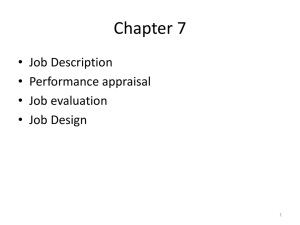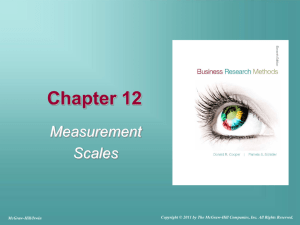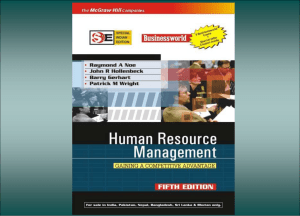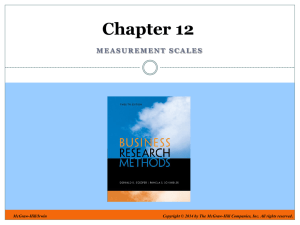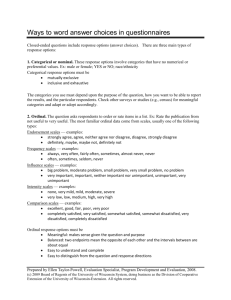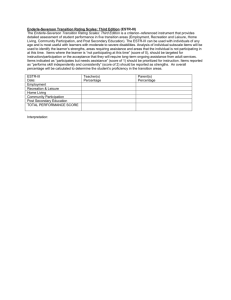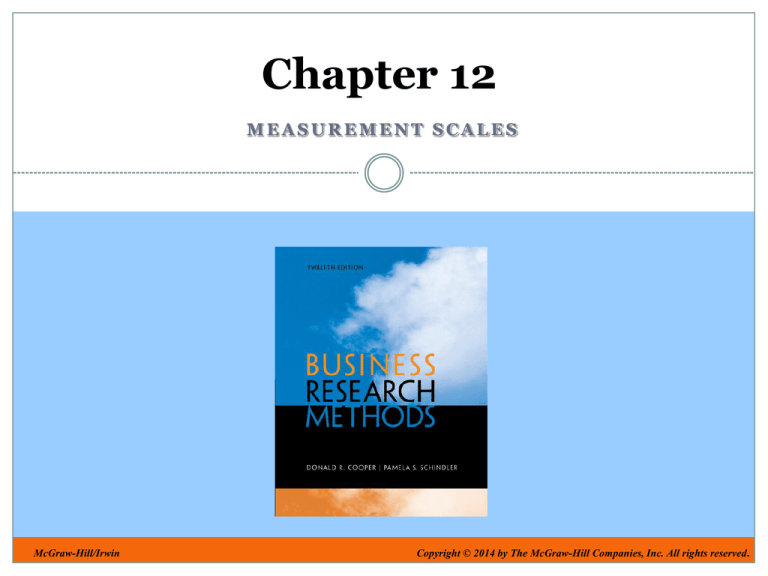
Chapter 12
MEASUREMENT SCALES
McGraw-Hill/Irwin
Copyright © 2014 by The McGraw-Hill Companies, Inc. All rights reserved.
Learning Objectives
Understand…
The nature of attitudes and their relationship to
behavior.
The critical decisions involved in selecting an
appropriate measurement scale.
The characteristics and use of rating, ranking,
sorting, and other preference scales.
12-2
The
Scaling
Process
12-3
Scales can be single-item or multiple-item
Single-item, less reliable
and valid
1. 1-item scales (low reliability and validity)
4
I am satisfied with the ____ cellphone brand I am using right now
Multiple-item, more reliable
and valid
2. Multiple item scales (high reliability and validity)
Please think about the cellphone brand you are using right now. Now, please insert that name in
the blanks in the following statements and circle a number to show the extent of your agreement
to them.
Strongly
Disagree Disagree
I am satisfied with the
____ cellphone brand I
am using right now
____ cellphone delivers
the benefits it promises
My expectations are met when
I use ___ cellphone
____ cellphone is what
I exactly need
Neither Disagree
nor Agree
Agree
Strongly
Agree
1
2
3
4
5
1
2
3
4
5
1
2
3
4
5
1
2
3
4
5
12-4
Use of Scale
5
The most frequent use of scales is to measure
attitudes
An attitude is a learned, stable predisposition
or tendency to respond to oneself, other persons,
objects, or issues in a consistently favorable or
unfavorable way.
12-5
Nature of Attitudes
Cognitive
I think oatmeal is healthier
than corn flakes for breakfast.
Affective
I hate corn flakes.
Behavioral
I intend to eat more oatmeal
for breakfast.
12-6
Improving Attitude to Behavior Predictability
Specific
Multiple
measures
Strong
Factors
Reference
groups
Direct
Basis
12-7
Selecting a Measurement Scale
Research objectives
Response types
Data properties
Number of
dimensions
Balanced or
unbalanced
Forced or unforced
choices
Number of
scale points
Rater errors
12-8
Response Types
Rating scale
Ranking scale
Categorization
Sorting
12-9
Number of Dimensions
Unidimensional
Multi-dimensional
12-10
Balanced or Unbalanced
Dr. Sindhav’s Thumb Rule: Keep Balanced
How good an actress is Jennifer Lawrence?
Very bad
Bad
Neither good nor bad
Good
Very good
Poor
Fair
Good
Very good
Excellent
12-11
Forced or Unforced Choices:
Dr. Sindhav’s Thumb Rule: Keep Unforced
How good an actress is Jennifer Lawrence?
Very bad
Bad
Neither good nor bad
Good
Very good
Very bad
Bad
Neither good nor bad
Good
Very good
No opinion
Don’t know
12-12
Number of Scale Points
Dr. Sindhav’s Thumb Rule: Keep 5
How good an actress is Jennifer Lawrence?
Very bad
Bad
Neither good nor bad
Good
Very good
Very bad
Somewhat bad
A little bad
Neither good nor bad
A little good
Somewhat good
Very good
12-13
Multiple-Choice,
Single-Response Scale
What newspaper do you read
most often for financial news?
Check one.
East City Gazette
West City Tribune
Regional newspaper
National newspaper
Other (specify:_________)
12-14
Multiple-Choice,
Multiple-Response Scale
Check all sources
you consulted when
designing your new
home.
Online planning
services
Magazines
Independent
contractor/builder
Designer
Architect
Other
(specify:_______)
12-15
Likert Scale: Agree-Disagree scales
The Internet is superior to
traditional libraries for
comprehensive searches.
Strongly Disagree
Disagree
Neither Agree nor
Disagree
Agree
Strongly Agree
12-16
Semantic Differential: Bipolar Adjectives
17
12-17
Graphic
of SD
Analysis
12-18
Multiple Rating List Scales
“Please indicate how important or unimportant each service characteristic is:”
IMPORTANT
Fast, reliable repair
7
Service at my location
7
Maintenance by manufacturer
7
Knowledgeable technicians
7
Notification of upgrades
7
Service contract after warranty
7
6
6
6
6
6
6
5
5
5
5
5
5
4
4
4
4
4
4
3
3
3
3
3
3
2
2
2
2
2
2
UNIMPORTANT
1
1
1
1
1
1
12-19
Graphic Rating Scales
12-20
Ranking Scales
Paired-comparison scale
Forced ranking scale
Comparative scale
12-21
Ranking Scale
12-22
Key Terms
Balanced rating scale
Rating scale
Categorization
Ranking scale
Graphic rating scale
Item analysis
Likert scale
Likert-type scale
12-23


